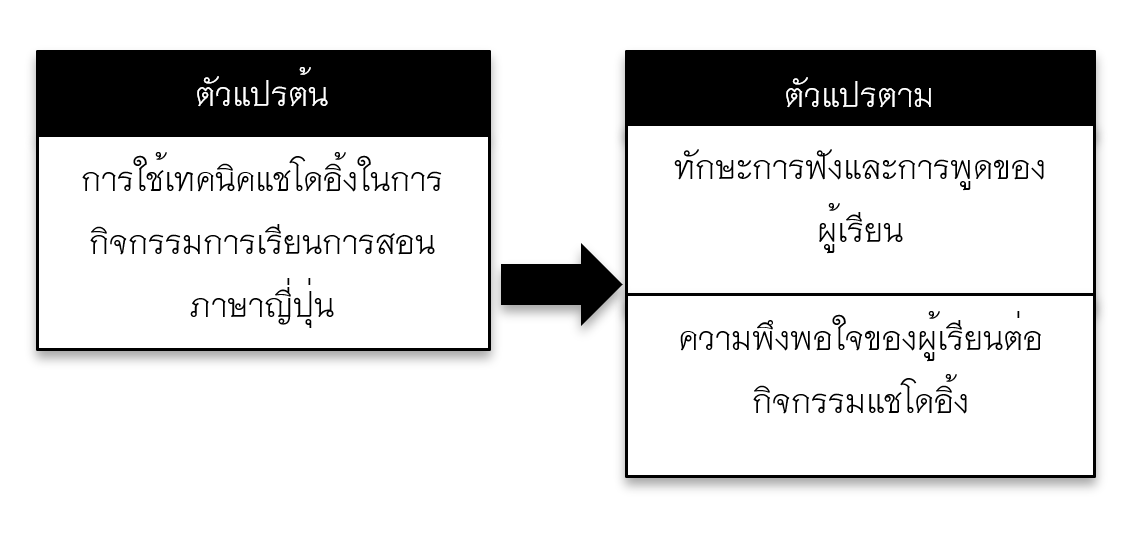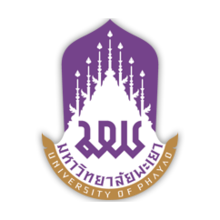Improving Listening and Speaking Skills through Shadowing Technique
Keywords:
Japanese, Listening, Speaking, Shadowing TechniqueAbstract
This research aims to study the effectiveness of the shadowing technique in developing listening and speaking skills in the Japanese language among Thai students, with an emphasis on applying digital technology to enhance learning efficiency outside the classroom. The study involved a sample group of 22 students registered for a Japanese conversation course. Research tools included shadowing activities, focus group interview, and pre- and post-learning tests to measure skill development and student satisfaction. The results showed that the shadowing technique significantly improved listening and speaking skills in Japanese, with students' average scores increasing from 15.54 to 19.36 out of a total of 25 points, indicating statistically significant skill development. Qualitative analysis from focus group interview revealed increased confidence, vocabulary and phrase memorization, and pronunciation improvement. However, there is a need for improvement in the speed of information reception and interaction. This research suggests that tailoring the shadowing technique to the ability levels and needs of students, along with specific feedback and the application of technology, can enhance training efficiency, leading to effective learning and motivation for students.
References
กระทรวงการอุดมศึกษา วิทยาศาสตร์ วิจัยและนวัตกรรม. (2567). (ร่าง) ยุทธศาสตร์การวิจัยและนวัตกรรม 20 ปี (พ.ศ.2560-2579). สำนักงานการวิจัยแห่งชาติ (วช.). จาก https://www.nrct.go.th.
Boonprakate, C. (2021). Effects of using authentic materials on Japanese listening ability of third year Japanese major students, Nimitmai Review, 4(1), 73-82.
Hamada, Y. (2012). An effective way to improve listening skills through shadowing. The Language Teacher, 36(1), 3-10.
Japan Foundation. (2021) Survey on Japanese-Language Education Abroad 2021. Retrieved March, 31, 2023, Form https://www.jpf.go.jp/j/project/japanese/survey/result/dl/survey2018/Report_summarytables_e.pdf.
Jeong, K. (2018). Developing EFL learners’ communicative competence through multimedia-assisted language learning. Journal of theoretical and applied information technology, 96(5), 1367-1376.
Shiota, K. (2012). The effectiveness of shadowing on students’ psychology in language learning. Accents Asia, 5(1), 71-83.
Pradana, A. B. A., Wijayanto, S., Fadilah, U.N. (2021). Wake up call messages: Shadowing technique with listening logs to improve students oral performance. Proceedings of the 2nd Borobudur International Symposium on Humanities and Social Sciences, BIS-HSS 2020. European Union Digital Library. Form http://dx.doi.org/10.4108/eai.18-11-2020.2311766.
Saito, Y. (2022). Problems and issues in learning Japanese language among Thai and Chinese university students: A mixed method micro research. Osaka Keidai Ronshu, 73(2), 43-61.
Sugiarto, R., Prihantoro, Edy, S. (2020). The impact of shadowing technique on tertiary students’ English pronunciation. Journal of Linguistics and Language Teaching, 6(1), 114-125.

Downloads
Published
How to Cite
Issue
Section
License
Copyright (c) 2024 Phayao University

This work is licensed under a Creative Commons Attribution-NonCommercial-NoDerivatives 4.0 International License.
ผู้นิพนธ์ต้องรับผิดชอบข้อความในบทนิพนธ์ของตน มหาวิทยาลัยพะเยาไม่จำเป็นต้องเห็นด้วยกับบทความที่ตีพิมพ์เสมอไป ผู้สนใจสามารถคัดลอก และนำไปใช้ได้ แต่จะต้องขออนุมัติเจ้าของ และได้รับการอนุมัติเป็นลายลักษณ์อักษรก่อน พร้อมกับมีการอ้างอิงและกล่าวคำขอบคุณให้ถูกต้องด้วย
The authors are themselves responsible for their contents. Signed articles may not always reflect the opinion of University of Phayao. The articles can be reproduced and reprinted, provided that permission is given by the authors and acknowledgement must be given.







